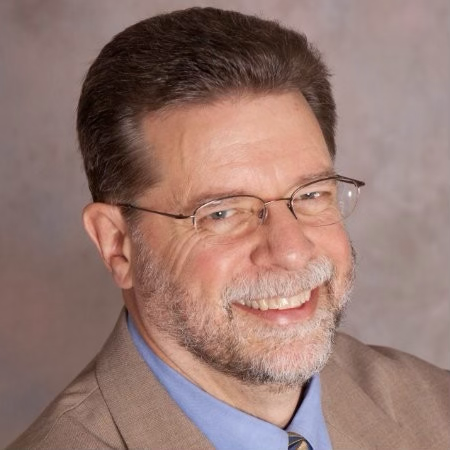
Rachel Drummond, MEd
Forensic engineering is a fascinating intersection of engineering expertise and investigative problem-solving. At its core, the field uses engineering principles to determine the causes of failures in structures, systems, or devices. This information is often crucial in legal disputes, regulatory investigations, and safety improvements.
Forensic engineering encompasses various subfields, each specializing in failure analysis and investigation. Mechanical forensic engineers delve into failures in machinery, vehicles, and structural components, while electrical specialists focus on issues like circuit malfunctions and power system failures. Fire research engineers investigate the origins and causes of fires, often determining whether they were accidental or intentional. Other subfields include environmental forensics, which examines contamination and ecological impacts, and materials science, which focuses on analyzing failures caused by defects or degradation in materials. This diversity allows forensic engineering to address various challenges across industries, making it an essential discipline in safety and accountability.
Forensic engineering touches nearly every industry, from construction and manufacturing to healthcare and transportation. This article explores the fundamentals of forensic engineering, its applications, challenges, and insights from Matt Baretich, PE, PhD, an experienced forensic biomedical engineer.

Dr. Matt Baretich is the president of Baretich Engineering, Inc.—a Fort Collins, Colorado-based firm specializing in clinical and forensic engineering. He also works for Lower Mainland Biomedical Engineering in Vancouver, BC.
With decades of experience in engineering and healthcare, Dr. Baretich has held prominent roles, such as director of engineering services at the University of Colorado Hospital and director of bioengineering at the University of Colorado Health Sciences Center.
Dr. Baretich earned a PhD in hospital and health administration from the University of Iowa, an MS in biomedical engineering, and a BS in electrical engineering from Iowa State University. A licensed professional engineer (PE), he holds multiple certifications in patient safety, healthcare risk management, and clinical engineering. His expertise and leadership have positioned him as a leading figure in the intersection of engineering, healthcare technology, and safety.
ForensicsColleges.com: What inspired you to pursue a career in forensic engineering?
Dr. Baretich: I’m a biomedical engineer by training and a consultant who works with hospitals on how they maintain their medical equipment. Almost 30 years ago, one of my mentors suggested I take on a legal case related to forensic engineering.
While most engineers dislike the confrontation of legal work, I find it fascinating. This unique blend of science, problem-solving, and legal work makes forensic engineering a distinct and impactful field.
ForensicsColleges.com: What challenges do you face when conducting investigations?
Dr. Baretich: One of the key challenges in conducting forensic investigations is navigating the broad range of contexts in which devices are used rather than focusing narrowly on a single specialization. While it is common to encounter cases where harm has occurred and a medical device is involved, it is rare for the device itself to have failed outright.
Instead, investigations often center on questions such as whether the device was well-designed, whether its instructional materials were adequate, whether it was suitable for the specific application, or whether its complexity led to use error.
Frequently, attorneys approach with the assumption that the device malfunctioned, but the evidence often points to issues related to how the device was used rather than inherent flaws in its design. My expertise lies in understanding this broader context, drawing on experience as a biomedical engineer and consultant for hospitals. I focus on the intersection of technology, training, and practical application rather than the narrow technical details of a single device. Bringing scientific expertise into the legal system improves the likelihood of a fair outcome.
Forensic engineering is pivotal in analyzing incidents where systems or devices may have contributed to harm. In healthcare, for example, Dr. Baretich often investigates cases involving medical devices.
“A typical case might involve harm to a patient due to equipment like ventilators, defibrillators, or infusion pumps,” Dr. Baretich explained. He added, “The medical device is one of many components, but determining its contribution to the harm is key.”
Beyond healthcare, forensic engineers address structural collapses, machinery failures, and environmental issues, making the field diverse in scope.
Structural collapses, such as those involving bridges, buildings, or dams, often require forensic engineers to determine whether design flaws, material failures, or external forces contributed to the incident. For example, forensic engineers examined the 2024 collapse of the Francis Scott Key Bridge in Baltimore, Maryland, to understand whether material defects and construction methods led to its failure, ultimately informing improvements in bridge safety standards.
Machinery failures in industries like manufacturing, aviation, and automotive engineering are another significant focus. Engineers analyze mechanical systems to identify faults and improve future performance. One example is the investigation of turbine malfunctions in power plants, where forensic engineers identified design flaws causing mechanical stress, leading to critical upgrades in turbine design and operation protocols.
Environmental forensics is pivotal in investigating pollution sources, assessing contamination, and determining liability for ecological damage. A notable case involving a search for the source of environmental impact due to equipment failure was the Deep Water Horizon oil spill in the Gulf of Mexico, where forensic engineers used 3D laser scanning and computer modeling to determine the causes of emergency valve failure and assess the contamination.
Additionally, forensic engineers are often involved in fire investigations, uncovering the origins and causes of fires to guide safety improvements and resolve legal disputes. For instance, after the 2017 Grenfell Tower fire in London, forensic engineers played a crucial role in analyzing the building’s materials and fire safety systems, leading to widespread changes in fire safety regulations for high-rise buildings.
This diversity highlights the field’s vital role in addressing complex challenges across engineering disciplines.
Modern forensic engineers rely on simple and sophisticated tools to reconstruct events and uncover truths. Sophisticated tools include advanced simulation software, data analysis algorithms, and imaging technologies like 3D laser scanning, which allow engineers to create detailed models and timelines of incidents for precise analysis and presentation.
One straightforward, yet valuable tool is the event log built into many medical devices.
“Many medical devices record when alarms occurred, what the alarms were, and even details like button presses and knob adjustments,” Dr. Baretich noted. “In cases involving ventilators, these logs help reconstruct a narrative of events, showing how a caregiver struggled with the device. It’s compelling evidence both for trial testimony and understanding real-world challenges.”
This reliance on cutting-edge technology highlights how forensic engineering merges traditional engineering with modern data analysis.
Forensic engineers encounter numerous challenges, mainly when dealing with complex systems where user error or contextual factors are as critical as the technology itself.
“Most devices do what they are designed to do,” Dr. Baretich observed. “The questions often revolve around design adequacy, instructional material, and user context. For instance, was the device difficult to use, or was it a poor choice for the situation?”
Dr. Baretich emphasized the importance of a broad perspective: “I’m not just an expert on how a widget works. My value lies in understanding the context of use. Attorneys may want a narrowly specialized expert, but I’ve found that broader expertise is often more useful in these cases.”
Additionally, Dr. Baretich underscored the importance of neutrality in forensic engineering: “Some experts specialize on one side, like defending hospitals. I work for whoever needs my expertise. Approaching cases from a neutral perspective ensures credibility and avoids being seen as a ‘hired gun.’”
Building a strong foundation in a core engineering discipline is crucial for those interested in pursuing forensic engineering. Most undergraduate programs focus on engineering principles, while more advanced degrees may offer forensic engineering specializations. For many, forensic engineering is learned on the job or through continuing education.
“I don’t know where you would go to school specifically for forensic biomedical engineering,” Dr. Baretich admitted. “I learned basic biomedical engineering and continue to practice in that field. This foundational expertise is essential before offering services in legal cases.”
Dr. Baretich also recommended joining professional organizations like the National Academy of Forensic Engineers (NAFE) to build connections and learn from others in the field. “Getting your first opportunity might come by chance, as it did for me, but keeping your eyes open for opportunities is key.”
Forensic engineering is a vital and intriguing field that bridges the gap between technical expertise and investigative inquiry. By analyzing failures, these engineers contribute to safety improvements, clarify legal contexts, and often prevent future disasters.
Forensic engineers are indispensable in uncovering the truth behind a medical device malfunction or determining the causes of structural failures. Dr. Baretich noted, “I find satisfaction in bringing scientific understanding into the legal system. It’s a unique way to make a meaningful impact.”
Forensic engineering offers a compelling career path for anyone drawn to the challenge of solving complex structural and process-oriented problems and contributing to justice.

Rachel Drummond, MEd
Rachel Drummond has given her writing expertise to ForensicsColleges.com since 2019, where she provides a unique perspective on the intersection of education, mindfulness, and the forensic sciences. Her work encourages those in the field to consider the role of mental and physical well-being in their professional success.
Rachel is a writer, educator, and coach from Oregon. She has a master’s degree in education (MEd) and has over 15 years of experience teaching English, public speaking, and mindfulness to international audiences in the United States, Japan, and Spain. She writes about the mind-body benefits of contemplative movement practices like yoga on her blog, inviting people to prioritize their unique version of well-being and empowering everyone to live healthier and more balanced lives.